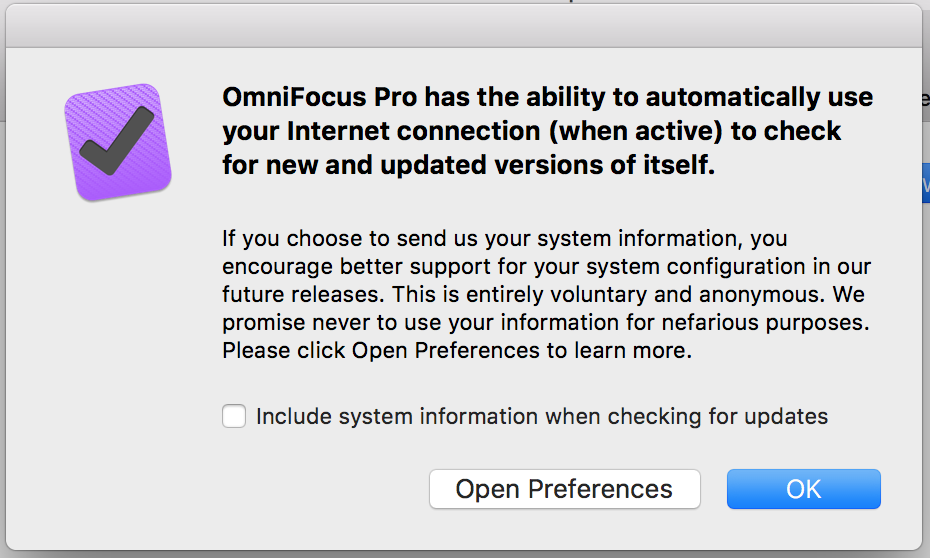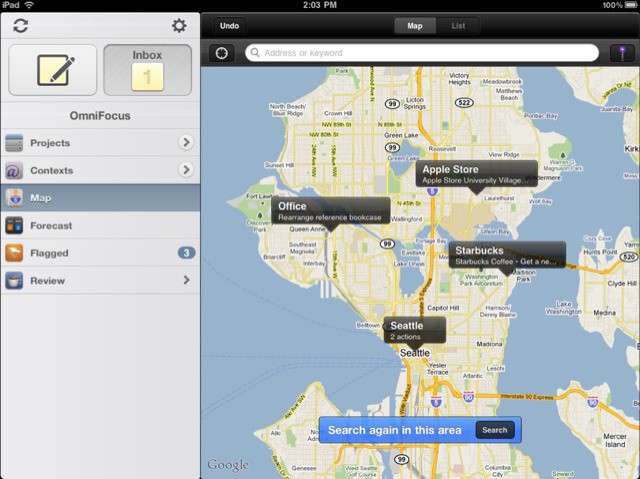

In the new OmniFocus, location needs to be assigned to a Context from the context editing view. iOS 5 isn’t coming out until Wednesday, October 12th, but I’ve been able to test the functionality on my iPhone 4 running the Golden Master release of iOS 5. The new Location Reminders in OmniFocus require an iPhone 4 or iPad 2 3G with iOS 5 installed. The same technology is used by Apple in Reminders, a new native app in iOS 5. Coming next: a look at my project list.The Omni Group released two updates for its OmniFocus app for iPhone and iPad today, adding several bug fixes and improvements, iOS 5 compatibility, and a new Location Reminders feature that leverages iOS 5’s geo-fencing APIs to send you a reminder when you’re in the right area to complete an action. I also use my ‘Reorder Tags’ plug-in to keep my tasks ordered consistently.Īnd that’s a wrap on my excessive number of OmniFocus tags. This denotes to me that the tags are complete and removes the tasks from this perspective. Once I’m satisfied that all tags have been added I use a keyboard shortcut combined with a simple action to apply a blank tag (‘⠀’) to the tasks. The ‘Scheduling’ group of tags is managed by my ‘Scheduling Plug-In’ and represent the planned ‘do dates’ for tasks.Īs outlined in my recent post on custom perspectives, I have a ‘Check Tags’ perspective that I use to check that all of my tasks have been tagged appropriately.
#Omnifocus update full#
The ‘🌟’ (Starred) tag is rarely used, but, if I want to pull in a task rather than a full project, I can use this. Tasks under the ‘Scheduled’ parent tag are filtered out of many of my perspectives, so these don’t clutter other views. You may note that there are two tag groups for each of these: I manually move weeks to the first group when the week arrives as part of my weekly review. The two ’12WY’ and ‘UNE’ tag groups are for planning out future weeks of The 12-Week Year and my university studies. ‘TOMM L2’ and ‘TOMM 元’ tags are used for housework and are inspired by The Organised Mom Method. This tag populates the ‘ASAP’ custom perspective on my dashboard. ‘⏰’ (ASAP) – This tag represents things I’d like to do soon and/or which are time-sensitive but aren’t necessarily due. ‘⚠️ Due Today’ – Keyboard Maestro uses my ‘Tag Tasks Due Today’ Plug-In to apply this tag automatically to any tasks that are due today, to make sure it is included in my ‘Due Soon’ perspective. I’ve found that this helps me to consider the purpose of a tag, and to group tags in a logical way. I don’t use these for tagging, but they add a handy visual separation between the below types of tags without adding complexity to the tag hierarchy itself. I’d like to give a shout-out to the ‘Tags Revisited’ episode of Nested Folders, which precipitated much of how I think about my tags.Īfter listening to that episode, I added several ‘dummy tags’ into my tag list, with names like ‘-STATUS-’. You’ll see this in the following examples. That means that if I want to apply the tag using OmniFocus’ tag field, I can simply start typing ‘Quick’, arrow down once, and select the lightning tag. For example, take my ‘Quick’ tag: the tag itself is ‘⚡’ but it is nested underneath another tag named ‘Quick’. In the case of the single emoji tags, these do also serve a space-saving function.Ī quick note about these single emoji tags: if I have a tag that is just made up of a single, non-alphanumeric character, I will typically nest it under another tag that describes its purpose. I like having them there, and I think they improve scannability. You’ll notice that the vast majority of my tags are either a) an emoji and a label or just b) a single emoji.Īt the end of the day, this is mostly a matter of personal preference. I am a prolific user of emoji in my tags (and we’ll see this in my projects soon, too). So, over this week, I’m concentrating on the more foundational, structural side of things, like projects, tags, and perspectives.Īt this point, we’ve covered my main ‘dashboard view’, more custom perspectives, some automation magic that helps with window management and navigation, and using the ‘focus’ feature and tags to switch between contexts. That session will focus on the magic of Omni Automation (✨!). 
In the lead-up to my Learn OmniFocus workflow session, I wanted to share some of the nitty-gritty details of how I manage my tasks with OmniFocus.






 0 kommentar(er)
0 kommentar(er)
